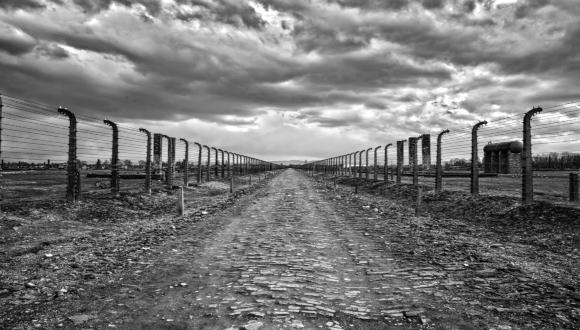International Holocaust Remembrance Day 27.01.21
The Holocaust and the Netherlands
Following the outbreak of WWII, the Netherlands hoped to remain out of the battle and declared neutrality. However, in May 1940, German troops successfully invaded the country and seized key points during the first days. The Netherlands, unprepared for war, in terms of combat capability or consciousness, surrendered after four days of fighting. On May 14, 1940, a ceasefire agreement was signed between the two sides, and the Netherlands was placed under Nazi-German occupation. Initially, the Germans implemented a relatively moderate policy (the "velvet glove” approach) to gain the sympathy of the Dutch people. However, realizing that their policy had not been accepted, the Germans began to pursue a coercive policy based on threats and commands.
At the outbreak of the war, 140,000 Jews lived in the Netherlands, of whom approximately 15,000 were refugees. Half of the Jews lived in Amsterdam. The first anti-Jewish decrees were issued in the fall of 1940--Jews were excluded from public posts, and those holding such offices were forced to resign; all Jews had to register, and identity cards were issued indicating the letter ‘J’; a Judenrat was formed; the order to wear a yellow badge was issued; and Jews were forced to live under curfew and were eventually deported to concentration camps. In the summer of 1942, the first deportations of Jews to the transit camps of Westerbork and Vught began, with the final destinations of Auschwitz and Sobibor. About 75% of the entire Jewish community in the Netherlands perished during the Holocaust, the highest rate in Western Europe.
Studies show that anti-Semitism was present in the Netherlands, though it was not widely expressed or violent. The Jewish community was well integrated into local society and did not experience discrimination. Except for ardent Dutch Nazis and extreme anti-Semites, Dutch society did not support the deportation of Jews. During the occupation, many Dutch people provided Jews with hiding places, and, as a result, some Dutch citizens were severely punished. The destruction of the Jewish community by the Nazi regime would not have been possible without the extensive cooperation of Dutch civil servants – burgermeisters, police officers, and railway officials. The Germans made extensive use of the Dutch police and informers to expose hidden Jews, a common phenomenon in the Netherlands.
When the persecution and mass deportations began, there were no organized efforts to help individuals escape or go into hiding. Many non-Jewish Dutch sought refuge as well, among them members of the resistance, students, and political leaders. Initially, there were small groups and individuals from all sectors of the population who helped the escapees. In 1943, a national organization for helping people in hiding, Landelijke Organisatie voor Hulp aan Onderduikers (“L.O.”), was formed. It focused, among other things, on raising funds, providing forged identity cards, and connecting individuals to one another. During the years of the war, various resistance organizations were established in the Netherlands. The "Westerweel Group” is a notable example of the cooperation between Jews and Christians in rescue operations in the Netherlands. Led by Joop Westerweel, a Dutch schoolteacher and educator, the group was made up of young Christians and Jews from the pioneering movements in the country.
An anonymous eyewitness account – In 1958, the Wiener Library received the anonymous testimony of a young Jewish girl from the Netherlands, called "Two and a Half Years in Hiding." The testimony covers the period between May 1940 and April 1, 1945, when the British liberated the country. The girl portrays life under Nazi anti-Jewish policies in the Netherlands, including the obligation to wear the yellow badge and the deportation of the Jews in July-August 1942.
Following the anti-Jewish decrees, and with the aid of an underground organization (name not specified), she found refuge in a non-Jewish laborer's house near the German border. There she remained, in the attic, until the liberation. The testimony depicts daily life in hiding: the impossibility of going out except at night; the radio that was her only contact with the outside world; the harsh, cold nights during wintertime; the laborer's priest, who encouraged her and the other fugitives who were hiding, bringing them wine, books, and cigarettes. In addition, the testimony recounts two dramatic Nazi raids on the house in which she was hiding. Concluding with the liberation and the fugitives' emergence from hiding after two and a half years, the testimony describes the first steps that the fugitives took in the open air and the feeling of the sun on their crying faces.


